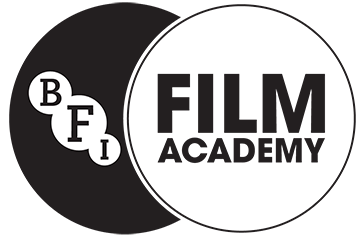2.2 Describe a range of key job roles and responsibilities in the film industry
5 key job roles in film
DIRECTOR
1- A film director is someone who is in charge of making sure that every component of a movie runs smoothly. Generally, these directors work on a movie from its conception stage to its delivery stage. They have a say in how the scenes unfold, what props are going to be used, how the characters should look, and who should play specific parts. Directors also work with individuals in charge of lighting, scenery, writing, and so forth, to make sure that all of the elements come together. The director is in charge of the three main phases, which are pre-production, production and post-production. Generally, he or she does not actually do the work for post-production, but is in charge of overseeing it.
2- The screenwriter is the writer of the script of a film. They create the dialogue, the characters and the story line of a movie script. The screenwriter is often the most essential person in film production because no movie can start without some form of a script. Screenwriters are extremely adept at weaving together visual elements within plot and dialogue. It is their work that provides the directors, producers, actors and executives a project to work on in the first place.
PRODUCER
3- If you step back from the perceived glamour of the feature-film industry for a moment and look at it through dispassionate eyes it becomes obvious it’s really about creating a new product and taking it to market. Like any product, it starts with an idea and someone to champion it. In the film industry, that person is the producer.
The producer’s relationship with the idea, if it achieves the levels of success they are banking everything on, will most likely last a lifetime even though for the consumer it will come and go within the blink of an eye.
4- Pre-Production
The first job for a producer would be to find a screenplay to turn into a film. Or hire screenwriters to develop a story idea or adaption. It is the producer’s job to retrieve the film rights for the story. Traditionally Producers also hire the director and help them cast the film.
Producers will hire all of the head of departments of a film crew such as the production designer, the director of photography, additional producers such as co-producers, line producers and production managers.
Every key decision made during the pre-production process will go through the producer first. Being as organised as possible during pre-production stage will help the filming go smoother. The pre-production process is often the longest phase of making a film. Producer’s tasks during pre-production –
Finds the screenplay and story to work with
Hires the screenwriters to finish a final draft
Secures funding
Hires the director and helps them cast the film
Hires the main crew members
All major decisions will go through them
COSTUME DESIGNER
5- A costume designer is a fashion professional who is responsible for creating the look and mood for actors and actresses in film, television and stage productions. The costume designer does this through designing, sewing, researching and purchasing actual clothing and costumes worn by those on stage and by selecting or designing the accessories and props which help to define each character.
A costume designer must have a thorough understanding of film, production, theatre, marketing, and fashion design. Also needed is the ability and desire to research and continually learn about scenarios, cultures and periods of history which help demonstrate the director’s vision.
The costume designer and his/her team must ensure that individual props and wardrobes reflect the story being told and portray the character’s personalities, cultures, ages, status and relationships. Many costumes may be required for each character as costumes define the attitude and feel which may change with every new scene, setting or development.
Each costume design job begins with the designer carefully reading through the script. It is important that the costume designer has a good feel for the overall plot, the director’s focus and intent, as well as the personalities, roles and relationships various characters have throughout the production.
Once the costume designer has a good feel for the direction of the production, he/she may research clothing, designs and materials indicative of the particular location or time period. Next, the costume designer will create a costume plot which follows characters through the progression of the production, changing their attire when appropriate. This plot can include sketches, photographs or computerized images that are presented to the director and production team.
Once approved, the costume designer begins the hunt for necessary costumes and props. In some situations, entire costumes may be purchased either new or from second-hand stores. Other costumes will be drawn and sewn either by a tailor in close coordination with the costume designer or by the costume designer himself. Other costumes will be a combination of these two options. The costume designer is also responsible for supervising fittings and dress rehearsals. It is the designer’s responsibility to ensure that every costume is ready by the specified deadline.


Laili this is excellent research into key job roles in film production, well done. You have shown that you understand what these roles involve, you will gain more of a practical understanding when making your academy short film. This section is now complete.